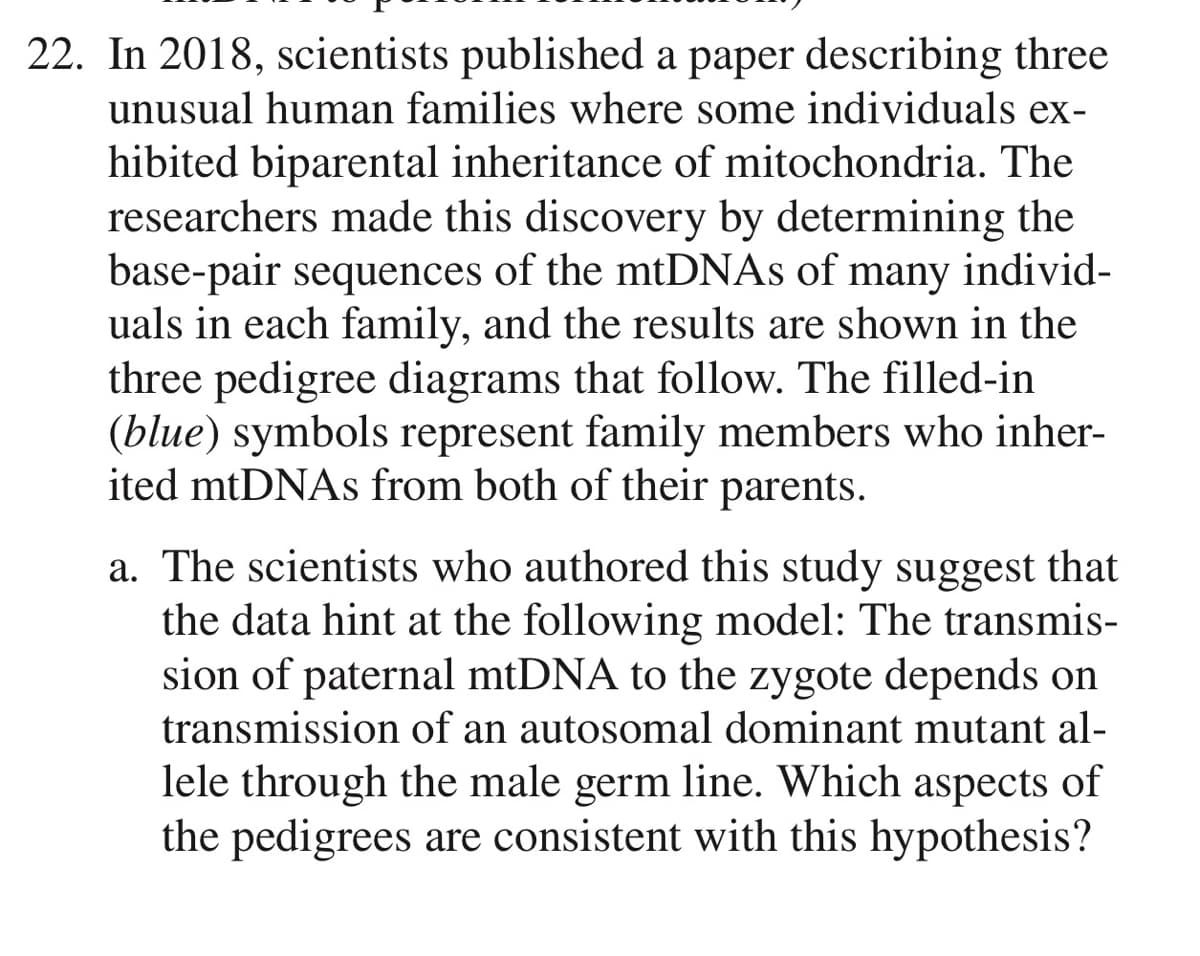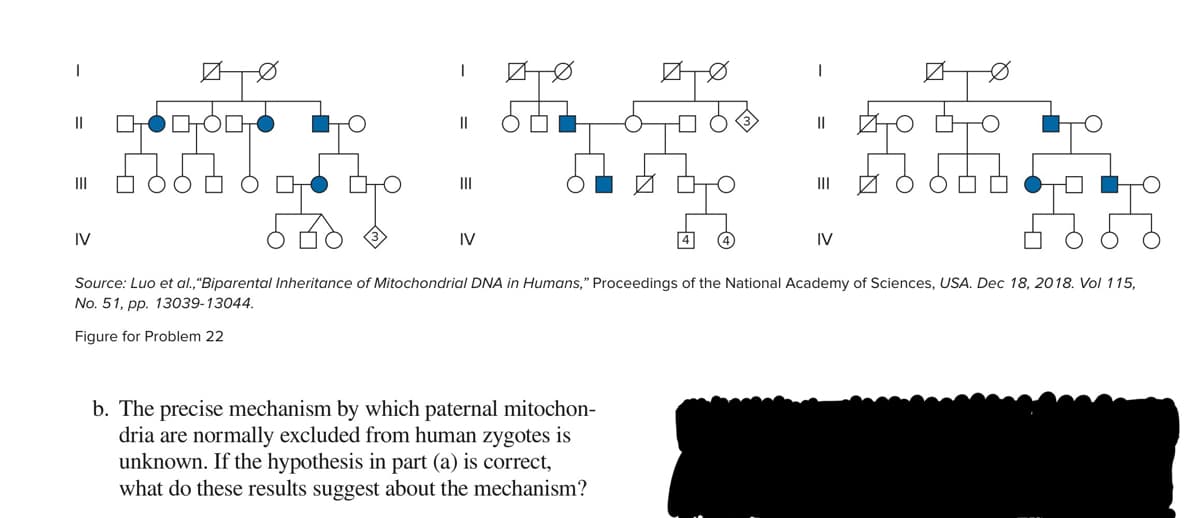scientists published a paper describing three unusual human families where some individuals ex- hibited biparental inheritance of mitochondria. The researchers made this discovery by determining the base-pair sequences of the mtDNAs of many individ- uals in each family, and the results are shown in the three pedigree diagrams that follow. The
scientists published a paper describing three unusual human families where some individuals ex- hibited biparental inheritance of mitochondria. The researchers made this discovery by determining the base-pair sequences of the mtDNAs of many individ- uals in each family, and the results are shown in the three pedigree diagrams that follow. The
Biology 2e
2nd Edition
ISBN:9781947172517
Author:Matthew Douglas, Jung Choi, Mary Ann Clark
Publisher:Matthew Douglas, Jung Choi, Mary Ann Clark
Chapter12: Mendel's Experiments And Heredity
Section: Chapter Questions
Problem 26CTQ: The gene for flower position in pea plants exists as axial or terminal alleles. Given that axial is...
Related questions
Topic Video
Question
In 2018, scientists published a paper describing three unusual human families where some individuals ex- hibited biparental inheritance of mitochondria. The researchers made this discovery by determining the base-pair sequences of the mtDNAs of many individ- uals in each family, and the results are shown in the three pedigree diagrams that follow. The filled-in (blue) symbols represent family members who inher- ited mtDNAs from both of their parents.
a. The scientists who authored this study suggest that the data hint at the following model: The transmis- sion of paternal mtDNA to the zygote depends on transmission of an autosomal dominant mutant al- lele through the male germ line. Which aspects of the pedigrees are consistent with this hypothesis?
b. The precise mechanism by which paternal mitochon- dria are normally excluded from human zygotes is unknown. If the hypothesis in part (a) is correct, what do these results suggest about the mechanism?

Transcribed Image Text:22. In 2018, scientists published a paper describing three
unusual human families where some individuals ex-
hibited biparental inheritance of mitochondria. The
researchers made this discovery by determining the
base-pair sequences of the mtDNAs of many individ-
uals in each family, and the results are shown in the
three pedigree diagrams that follow. The filled-in
(blue) symbols represent family members who inher-
ited mtDNAs from both of their parents.
a. The scientists who authored this study suggest that
the data hint at the following model: The transmis-
sion of paternal mtDNA to the zygote depends on
transmission of an autosomal dominant mutant al-
lele through the male germ line. Which aspects of
the pedigrees are consistent with this hypothesis?

Transcribed Image Text:||
II
II
II
IV
IV
IV
Source: Luo et al.,"Biparental Inheritance of Mitochondrial DNA in Humans," Proceedings of the National Academy of Sciences, USA. Dec 18, 2018. Vol 115,
No. 51, pp. 13039-13044.
Figure for Problem 22
b. The precise mechanism by which paternal mitochon-
dria are normally excluded from human zygotes is
unknown. If the hypothesis in part (a) is correct,
what do these results suggest about the mechanism?
Expert Solution
This question has been solved!
Explore an expertly crafted, step-by-step solution for a thorough understanding of key concepts.
This is a popular solution!
Trending now
This is a popular solution!
Step by step
Solved in 2 steps

Knowledge Booster
Learn more about
Need a deep-dive on the concept behind this application? Look no further. Learn more about this topic, biology and related others by exploring similar questions and additional content below.Recommended textbooks for you

Biology 2e
Biology
ISBN:
9781947172517
Author:
Matthew Douglas, Jung Choi, Mary Ann Clark
Publisher:
OpenStax

Biology 2e
Biology
ISBN:
9781947172517
Author:
Matthew Douglas, Jung Choi, Mary Ann Clark
Publisher:
OpenStax